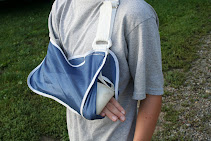Before, we know little about the nature and effects of sexual harassment. Only few sexual harassment cases are being tried in courts because only few of the victims are brave enough to come forward and file claims. This is not the case anymore.
People are more aware of their rights now. They are aware that, to stop sexual harassment, victims should come forward and make a stand. The problem with sexual harassment, however, is that it is becoming more common everywhere. Today, even our children are made to suffer and are made victims of sexual harassment.
What is really distressing, however, is that sexual harassment in schools is now becoming more prevalent. Sexual harassment affects not only students from colleges and universities. These sexual predators also target even our young children, who are in grade schools and high schools.
Sexual harassment in schools can occur in two forms:
1. Quid pro quo sexual harassment; and
2. Hostile environment harassment.
In quid pro quo sexual harassment, a student is made to believe by the school employee that the student must submit to unwelcome sexual conduct if the student wants to participate in programs or other school activities. Another way of committing quid pro quo sexual harassment is by making it seem that educational decision is affected by whether or not a student succumbs to sexual advances or favors. Example of this would be a teacher asking a student for a date.
On the other hand, hostile environment sexual harassment is committed when the sexual conduct is severe and pervasive that it affects the student’s ability to participate and benefit from the educational program or activity.
If you have been a victim of sexual harassment in your school, you can file charge with the Office for Civil Rights. The OCR will help you file action against the school for its failure to protect you against sexual predators.
OCR makes sure that they resolve your claims and mandate schools to provide a stricter policy against sexual harassment in schools and train school staff to address sexual harassments in schools. (http://www.ed.gov/about/offices/list/ocr/qa-sexharass.html)
People are more aware of their rights now. They are aware that, to stop sexual harassment, victims should come forward and make a stand. The problem with sexual harassment, however, is that it is becoming more common everywhere. Today, even our children are made to suffer and are made victims of sexual harassment.
What is really distressing, however, is that sexual harassment in schools is now becoming more prevalent. Sexual harassment affects not only students from colleges and universities. These sexual predators also target even our young children, who are in grade schools and high schools.
Sexual harassment in schools can occur in two forms:
1. Quid pro quo sexual harassment; and
2. Hostile environment harassment.
In quid pro quo sexual harassment, a student is made to believe by the school employee that the student must submit to unwelcome sexual conduct if the student wants to participate in programs or other school activities. Another way of committing quid pro quo sexual harassment is by making it seem that educational decision is affected by whether or not a student succumbs to sexual advances or favors. Example of this would be a teacher asking a student for a date.
On the other hand, hostile environment sexual harassment is committed when the sexual conduct is severe and pervasive that it affects the student’s ability to participate and benefit from the educational program or activity.
If you have been a victim of sexual harassment in your school, you can file charge with the Office for Civil Rights. The OCR will help you file action against the school for its failure to protect you against sexual predators.
OCR makes sure that they resolve your claims and mandate schools to provide a stricter policy against sexual harassment in schools and train school staff to address sexual harassments in schools. (http://www.ed.gov/about/offices/list/ocr/qa-sexharass.html)






